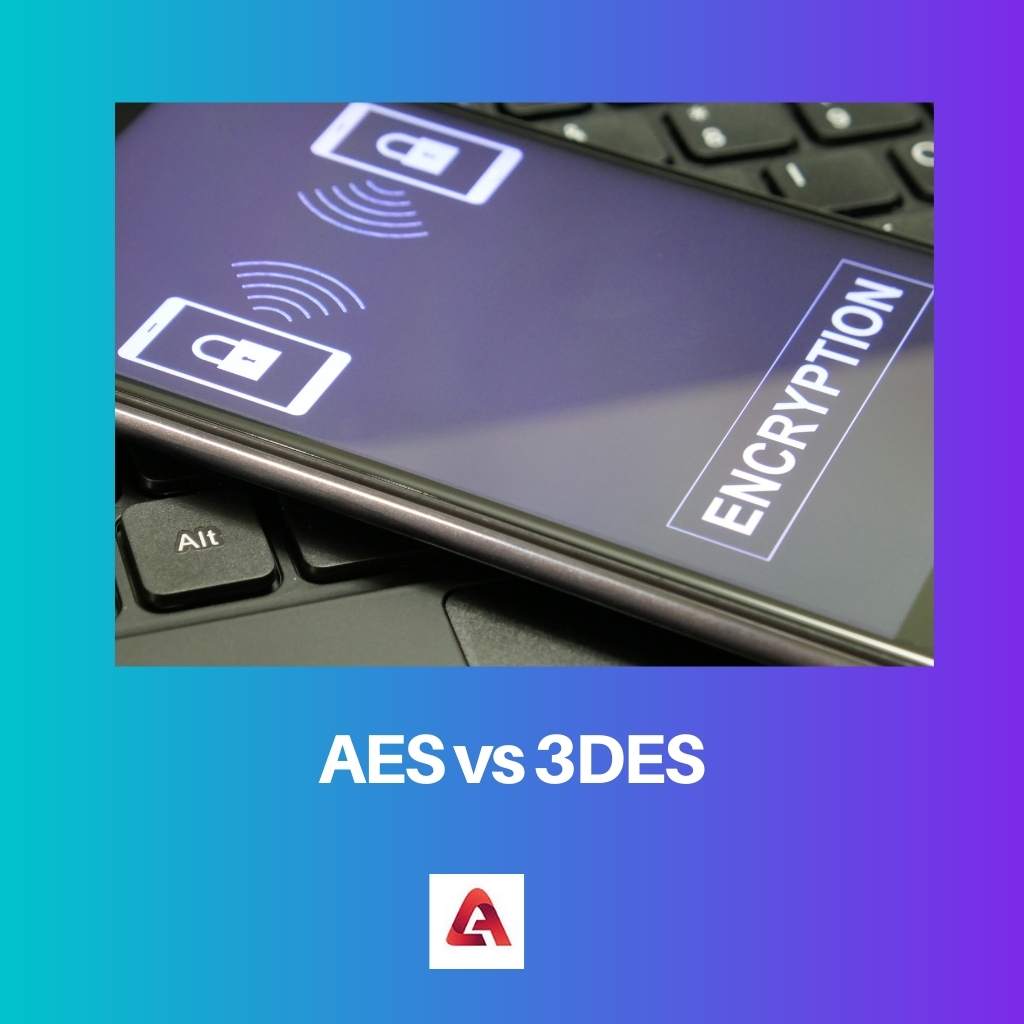AES and 3DES or triple-DES are both examples of symmetric block ciphers. These two are the current standards in data encryption. However, the use of 3DES has become very unpopular nowadays. Both have the same purpose and aims, but they are known to have many similarities.
Key Takeaways
- AES and 3DES are both encryption algorithms used to secure data in transit.
- AES is a newer and more secure encryption algorithm that uses a block size of 128 bits, while 3DES is an older and less secure algorithm that uses a block size of 64 bits.
- AES is faster and more efficient than 3DES and is now the standard encryption algorithm used in many applications and systems.
AES vs 3DES
AES (Advanced Encryption Standard) uses a block size of 128 bits and offers three key sizes: 128, 192, and 256 bits, and uses more encryption rounds than 3DES, which increases its security. 3DES (Triple Data Encryption Standard) uses a block size of 64 bits and a fixed key size of 168 bits.

As a standard symmetric encryption algorithm, AES comes after 3DES. So due for obvious reasons, AES is more advanced than 3DES. Its 128-bit keys provide ample strength. And these keys can be implemented in both software and hardware without any hassle.
In 3DES, the DES cipher has been re-used, as DES is implemented in it three times for each data block. 3DES is applicable for software and hardware, but it is slow in software as DES was meant to be used only in hardware.
Comparison Table
| Parameters of Comparison | AES | 3DES |
|---|---|---|
| Full form | The full form of AES is Advanced Encryption Standard. | The full form of 3DES is Triple Data Encryption Standard. |
| Key length | The encryption key length of AES is 128, 192, and 265 bits. | The encryption key length of 3DES is 168 bits (k1, k2, and k3), 112 bits (k1 and k2). |
| Created by | AES is created by Vincent Rijmen and Joan Daemen. | 3DES is created by IBM. |
| Developed in | AES was developed in the year 2001. | 3DES was developed in the year1978. |
| Speed | AES works very fast, faster than 3DES. | 3DES is very slower than AES. |
| Security | The security offered by AES is excellent. | 3DES is not more secure than AES but it offers adequate security. |
| Block size | The block size of AES is 128 bits. | 3DES has a block size of 64 bits. |
| Cryptanalysis resistance | It is strong against differential, shrank differential linear interpolation and square attacks. | It is vulnerable to a differential, and Brute Force attacker could be analyzed plaint text using differential cryptanalysis. |
What is AES?
Developed by Joan Daemen and Vincent Rijmen, AES or Advanced Encryption Standard algorithm is a symmetric key block cipher. Its encryption key length has options of 128, 192, and 256 bits, from which one can choose, and it has 128 bits sized blocks.
It is very fast in speed, and it applies to both hardware and software with ease.
The design rationale for AES is open. AES is able to encrypt 128 bits of plaintext. It offers top-class security. When it comes to structure, AES is based on a substitution-permutation network.
This type of network has many substitution and permutation steps to create the encrypted block. And thus, it is very secure.
Crypt-analytical attacks against AES did not happen yet. Biclique attack is more complicated than any other, but till now, it has been proven ineffective on AES. DES has made a great contribution to data security, but so far, AES stands as the best and most advanced.

What is 3DES?
Triple DES, 3D, ES, or TDES is a symmetric-key block cipher in cryptography. Officially it is known as the Triple Data Encryption Algorithm (TDEA or Triple DEA). Triple DES is DES applied three times to the information that is being encrypted to each data block.
The encryption key length of 3DES is 168 bits (k1, k2, and k3), 112 bits (k1 and k2), and its block size is limited to 64 bits. Feistel network structure is used in DES. Before going through the encryption steps, this structure divides the block into two halves.
3DES is a slow process, and even in terms of security, it is not the best. Even though it uses DES three times, it stays a lot vulnerable in the security department. It has been proven unsuccessful against Brute Force attacks and slows down the process substantially.

Main Differences Between AES and 3DES
- AES stands for Advanced Encryption Standard, and 3DES stands for Triple Data Encryption Standard, that is, DES is applied three times.
- AES was created by Vincent Rijmen and Joan Daemen in 2001, and 3DES was created by IBM in 1978.
- The key length encryption of AES is 128, 192, and 265 bits. In contrast, the encryption key length of 3DES is 168 bits (k1, K2, and k3), 112 bits (k1 and k2). Also, the block size of AES is 128 bits. In contrast, the Block size of 3DES is 64 bits.
- The speed of AES is very fast, but the speed of 3DES is very slow. Even when it comes to security, AES is a lot better than 3DES. Even though 3DES offers enough security, it is not as strong as AES.
- The cryptanalysis resistance of AES is strong against differential, linear differential interpolation, and also against square attacks. On the other hand, the cryptanalysis resistance of 3DES is vulnerable to a differential, and Brute Force attackers could be analyzed plaint text using differential cryptanalysis.



